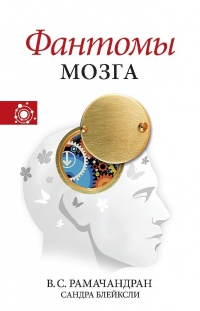Читать книгу "Пруст и кальмар. Нейробиология чтения - Марианна Вулф"
Шрифт:
Интервал:
Закладка:
39. J. A. Church, S. E. Petersen, and B. L. Schlagger (2006). Regions Showing Developmental Effects in Reading Studies Show Length and Lexicality Effects in Adults. Представлено Обществу нейробиологии.
40. Palmer et al. Investigation of the Functional Neuranatomy of Single Word Reading and Its Development.
41. R. B. Ivry, T. C. Justus, and C. Middleton (2001). The Cerebellum, Timing, and Language: Implications for the Study of Dyslexia // Dyslexia, Fluency, and the Brain. M. Wolf (ed.). Timonium, Md.: York. P. 189–211; R. B. Scott, C. J. Stoodley, P. Anslow, C. Paul, J. F. Stein, E. M. Sugden, and C. D. Mitchell (2001). Lateralized Cognitive Deficits in Children Following Cerebellar Lesions // Developmental Medicine and Child Neurology, 43. P. 685–691.
42. Nagy and Anderson. How Many Words Are There in Printed School English?
43. K. Stanovich (1986). Matthew Effects in Reading: Some Consequences of Individual Differences in the Acquisition of Literacy // Reading Research Quarterly, 21 (4). P. 360–407.
44. Kame’enui et al. Issues in the Design of Vocabulary Instruction.
45. Moats. Overcoming the Language Gap.
46. I. Beck, M. McKeown, and L. Kucan (2002). Bringing Words to Life: Robust Vocabulary Instruction. New York: Guildford.
47. Carlisle and Stone. Exploring the Role of Morphemes in Word Reading.
48. M. Henry (2003). Unlocking Literacy: Effective Decoding and Spelling Instruction. Baltimore, Md.: Brookes.
49. V. Mann and M. Singson (2003). Linking Morphological Knowledge to English Decoding Ability: Large Effects of Little Suffixes // Reading Complex Words: Cross-Language Studies // E. M. H. Assink and D. Sandra (eds.). New York: Kluwer. P. 1–25; E. D. Reichle and C. A. Perfetti (2003). Morphology in Word Identification: A Word Experience Model That Accounts for Morpheme Frequency Effects // Scientific Studies of Reading, 7. P. 219–237.
50. G. Greene (1969). The Lost Childhood and Other Essays. New York: Viking. P. 13.
51. M. Wolf and T. Katzir-Cohen (2001). Reading Fluency and Its Intervention // Scientific Studies of Reading, 5. P. 211–238. (Special Issue.) Вместе с моей бывшей студенткой, а теперь коллегой в Университете Хайфы, Тами Кацир, я предложила новое определение беглости, которое может служить в своем роде конспектом происходящих изменений на ранних этапах чтения. Вначале беглость чтения – продукт первоначального развития точности и последующего развития автоматизма в базовых сублексических и лексических процессах и их интеграции в чтение отдельного слова и связного текста. В числе этих процессов – перцептивные, фонологические, орфографические и морфологические на уровне буквы, буквосочетания и слова, а также семантические и синтаксические на уровне слова и уровне связного текста. После того как эти функции развились полностью, понятие беглости чтения уже относится к уровню точности и скорости, при которых декодирование относительно незатрудненное, устное чтение – гладкое и точное, с правильной просодией, а внимание может быть направлено на понимание.
52. M. Meyer and R. Felton (1999). Repeated Reading to Enhance Fluency: Old Approaches and New Directions // Annals of Dyslexia, 49. P. 83–306; R. Allington (1982). Fluency: The Neglected Reading Goal // Reading Teacher, 36(6). P. 556–561.
53. L. Cutting and H. Scarborough (2005). Prediction of Reading Comprehension: Relative Contribution of Word Recognition, Language Proficiency, and Other Cognitive Skills Can Depend on How Comprehension Is Measured // Scientific Studies of Reading, 10 (3). P. 277–299.
54. A. Baddeley (1986). Working Memory, Oxford: Clarendon.
55. Обратите внимание, что в некоторых случаях мы добрались до осознания этой взаимосвязи благодаря изучению детей с затруднениями понимания. См., например, следующие исследования: K. Nation and M. Snowling (1998). Semantic processing and the development of word recognition skills: Evidence from children with reading comprehension difficulties // Journal of Memory and Language, 39. P. 85–101; J. Oakhill and N. Yuill (1996). Higher Order Factors in Comprehension Disability: Processes and Remediation // Reading Comprehension Difficulties: Processes and Intervention. C. Cornaldi and J. Oakhill (eds.). Mahwah, N.J.: Erlbaum; D. Shankweiler and S. Crain (1986). Language Mechanisms and Reading Disorder: A Modular Approach // Cognition, 24 (1–2). P. 139–168; L. Swanson and J. Alexander (1997). Cognitive Processes as Predictors of Word Recognition and Reading Comprehension in Learning-disabled and Skilled Readers: Revisiting the Specificity Hypothesis // Journal of Educational Psychology, 89 (1). P. 128–158.
56. J. Bruner (1973). Beyond the Information Given. New York: Norton.
57. M. Lovett, S. Borden, T. DeLuca, L. Lacerenza, N. Benson, and D. Brackstone (1994). Treating the Core Deficits of Developmental Dyslexia: Evidence of Transfer-of-Learning Following Phonologically-and-Strategy-Based Reading Training Programs // Developmental Psychology, 30 (6). P. 805–822; M. Lovett (2000). Remediating the Core Deficits of Developmental Reading Disability: A Double-Deficit Perspective // Journal of Learning Disabilities, 33 (4). P. 334–358.
58. E. Bowen (1950). Out of a Book // Collected Impressions. New York: Knopf. P. 267.
6. Бесконечная история развития чтения
1. E. Bowen (1950). Out of a Book // Collected Impressions. New York: Knopf. P. 267.
2. T. Deeney, M. Wolf, and A. O’Rourke (1999). I Like To Take My Own Sweet Time: Case Study of a Child with Naming-Speed Deficits and Reading Disabilities // Journal of Special Education, 35 (3). P. 145–155.
3. Ibid.
4. P. McCardle (2001). Emergent and Early Literacy: Current Status and Research Directions // Learning Disabilities Research and Practice, 16 (4). (Special Issue.)
5. National Center for Education Statistics, NCES. The Nation’s Report Card: National Assessment of Educational Progress. Washington, D.C.: U. S. Department of Education (разные годы); National Institute of Child Health and Human Development, NICHD (2000). Report of the National Reading Panel. Teaching Children to Read: An Evidence-Based Assessment of the Scientific Research Literature on Reading and Its Implications for Reading Instruction. Reports of the Subgroups. (NIH Publication No.00–4754.) Washington, D.C.: U. S. Government Printing Office.
6. L. S. Schwartz (1992). The Confessions of a Reader // Reading in Bed. S. Gilbar, Jaffrey. N.H.: Godine. P. 61.
7. E. Winner (1988). The Point of Words: Children’s Understanding of Metaphor and Irony. Cambridge, Mass.: Harvard University Press.
Внимание!
Сайт сохраняет куки вашего браузера. Вы сможете в любой момент сделать закладку и продолжить прочтение книги «Пруст и кальмар. Нейробиология чтения - Марианна Вулф», после закрытия браузера.




